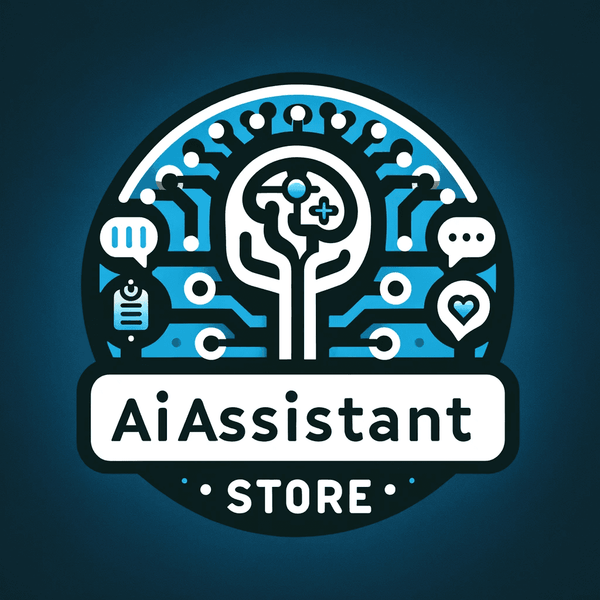Ever wondered what’s hiding behind the buzzword “AI Engineer”? I did too. From the outside it sounds shiny, but in reality it’s equal parts design work, wrangling messy data, stitching systems together, and obsessively checking whether things are doing what they’re supposed to. If you want the one-line version: they turn blurry problems into working AI systems that don’t collapse when real users show up. The longer, slightly more chaotic take - well, that’s below. Grab caffeine. ☕
Articles you may like to read after this one:
🔗 AI tools for engineers: Boosting efficiency and innovation
Discover powerful AI tools that enhance engineering productivity and creativity.
🔗 Will software engineers be replaced by AI?
Explore the future of software engineering in the era of automation.
🔗 Engineering applications of artificial intelligence transforming industries
Learn how AI is reshaping industrial processes and driving innovation.
🔗 How to become an AI engineer
Step-by-step guide to start your journey toward a career in AI engineering.
The quick take: what an AI engineer really does 💡
At the simplest level, an AI engineer designs, builds, ships, and maintains AI systems. The day-to-day tends to involve:
-
Translating vague product or business needs into something models can actually handle.
-
Collecting, labeling, cleaning, and - inevitably - re-checking data when it starts drifting off.
-
Picking and training models, judging them with the right metrics, and writing down where they’ll fail.
-
Wrapping the whole thing into MLOps pipelines so it can be tested, deployed, observed.
-
Watching it in the wild: accuracy, safety, fairness… and adjusting before it derails.
If you’re thinking “so it’s software engineering plus data science with a sprinkle of product thinking” - yep, that’s about the shape of it.
What separates good AI engineers from the rest ✅
You can know every architecture paper published since 2017 and still build a fragile mess. Folks who thrive in the role usually:
-
Think in systems. They see the whole loop: data in, decisions out, everything trackable.
-
Don’t chase magic first. Baselines and simple checks before stacking complexity.
-
Bake in feedback. Retraining and rollback aren’t extras, they’re part of the design.
-
Write stuff down. Tradeoffs, assumptions, limitations - boring, but gold later.
-
Treat responsible AI seriously. Risks don’t vanish by optimism, they get logged and managed.
Mini-story: One support team started with a dumb rules+retrieval baseline. That gave them clear acceptance tests, so when they swapped in a large model later, they had clean comparisons - and an easy fallback when it misbehaved.
The lifecycle: messy reality vs neat diagrams 🔁
-
Frame the problem. Define goals, tasks, and what “good enough” looks like.
-
Do the data grind. Clean, label, split, version. Validate endlessly to catch schema drift.
-
Model experiments. Try simple, test baselines, iterate, document.
-
Ship it. CI/CD/CT pipelines, safe deploys, canaries, rollbacks.
-
Keep watch. Monitor accuracy, latency, drift, fairness, user outcomes. Then retrain.
On a slide this looks like a neat circle. In practice it’s more like juggling spaghetti with a broom.
Responsible AI when the rubber hits the road 🧭
It’s not about pretty slide decks. Engineers lean on frameworks to make risk real:
-
The NIST AI RMF gives structure for spotting, measuring, and handling risks across design through deployment [1].
-
The OECD Principles act more like a compass - broad guidelines many orgs align to [2].
Plenty of teams also create their own checklists (privacy reviews, human-in-loop gates) mapped onto these lifecycles.
Docs that don’t feel optional: Model Cards & Datasheets 📝
Two pieces of paperwork you’ll thank yourself for later:
-
Model Cards → spell out intended use, eval contexts, caveats. Written so product/legal folks can follow too [3].
-
Datasheets for Datasets → explain why the data exists, what’s in it, possible biases, and safe vs unsafe uses [4].
Future-you (and future teammates) will silently high-five you for writing them.
Deep dive: data pipelines, contracts, and versioning 🧹📦
Data gets unruly. Smart AI engineers enforce contracts, bake in checks, and keep versions tied to code so you can rewind later.
-
Validation → codify schema, ranges, freshness; generate docs automatically.
-
Versioning → line up datasets and models with Git commits, so you’ve got a change log you can actually trust.
Tiny example: One retailer slipped schema checks in to block supplier feeds full of nulls. That single tripwire stopped repeated drops in recall@k before customers noticed.
Deep dive: shipping and scaling 🚢
Getting a model running in prod is not just model.fit(). The toolbelt here includes:
-
Docker for consistent packaging.
-
Kubernetes for orchestration, scaling, and safe rollouts.
-
MLOps frameworks for canaries, A/B splits, outlier detection.
Behind the curtain it’s health checks, tracing, CPU vs GPU scheduling, timeout tuning. Not glamorous, absolutely necessary.
Deep dive: GenAI systems & RAG 🧠📚
Generative systems bring another twist - retrieval grounding.
-
Embeddings + vector search for similarity lookups at speed.
-
Orchestration libraries to chain retrieval, tool use, post-processing.
Choices in chunking, re-ranking, eval - these small calls decide if you get a clunky chatbot or a useful co-pilot.
Skills & tools: what’s actually in the stack 🧰
A mixed bag of classic ML and deep learning gear:
-
Frameworks: PyTorch, TensorFlow, scikit-learn.
-
Pipelines: Airflow, etc., for scheduled jobs.
-
Production: Docker, K8s, serving frameworks.
-
Observability: drift monitors, latency trackers, fairness checks.
Nobody uses everything. The trick is knowing enough across the lifecycle to reason sensibly.
Tools table: what engineers really reach for 🧪
| Tool | Audience | Price | Why it’s handy |
|---|---|---|---|
| PyTorch | Researchers, engineers | Open source | Flexible, pythonic, huge community, custom nets. |
| TensorFlow | Product-leaning teams | Open source | Ecosystem depth, TF Serving & Lite for deploys. |
| scikit-learn | Classic ML users | Open source | Great baselines, tidy API, preprocessing baked in. |
| MLflow | Teams w/ many experiments | Open source | Keeps runs, models, artifacts organized. |
| Airflow | Pipeline folks | Open source | DAGs, scheduling, observability good enough. |
| Docker | Basically everyone | Free core | Same environment (mostly). Fewer “works only on my laptop” fights. |
| Kubernetes | Infra-heavy teams | Open source | Autoscaling, rollouts, enterprise-grade muscle. |
| Model serving on K8s | K8s model users | Open source | Standard serving, drift hooks, scalable. |
| Vector search libraries | RAG builders | Open source | Fast similarity, GPU-friendly. |
| Managed vector stores | Enterprise RAG teams | Paid tiers | Serverless indexes, filtering, reliability at scale. |
Yes, the phrasing feels uneven. Tool choices usually are.
Measuring success without drowning in numbers 📏
The metrics that matter depend on context, but usually a mix of:
-
Prediction quality: precision, recall, F1, calibration.
-
System + user: latency, p95/p99, conversion lift, completion rates.
-
Fairness indicators: parity, disparate impact - used carefully [1][2].
Metrics exist to surface tradeoffs. If they don’t, swap them.
Collaboration patterns: it’s a team sport 🧑🤝🧑
AI engineers usually sit at the intersection with:
-
Product & domain folks (define success, guardrails).
-
Data engineers (sources, schemas, SLAs).
-
Security/legal (privacy, compliance).
-
Design/research (user testing, esp. for GenAI).
-
Ops/SRE (uptime and fire drills).
Expect whiteboards covered in scribbles and occasional heated metric debates - it’s healthy.
Pitfalls: the technical debt swamp 🧨
ML systems attract hidden debt: tangled configs, fragile dependencies, forgotten glue scripts. Pros set up guardrails - data tests, typed configs, rollbacks - before the swamp grows. [5]
Sanity-keepers: practices that help 📚
-
Start small. Prove the pipeline works before complicating models.
-
MLOps pipelines. CI for data/models, CD for services, CT for retraining.
-
Responsible AI checklists. Mapped to your org, with docs like Model Cards & Datasheets [1][3][4].
Quick FAQ re-do: one-sentence answer 🥡
AI engineers build end-to-end systems that are useful, testable, deployable, and somewhat safe - while making tradeoffs explicit so no one’s in the dark.
TL;DR 🎯
-
They take fuzzy problems → dependable AI systems via data work, modeling, MLOps, monitoring.
-
The best keep it simple first, measure relentlessly, and document assumptions.
-
Production AI = pipelines + principles (CI/CD/CT, fairness where needed, risk thinking baked in).
-
Tools are just tools. Use the minimum that gets you through train → track → serve → observe.
Reference links
-
NIST AI RMF (1.0). Link
-
OECD AI Principles. Link
-
Model Cards (Mitchell et al., 2019). Link
-
Datasheets for Datasets (Gebru et al., 2018/2021). Link
-
Hidden Technical Debt (Sculley et al., 2015). Link

